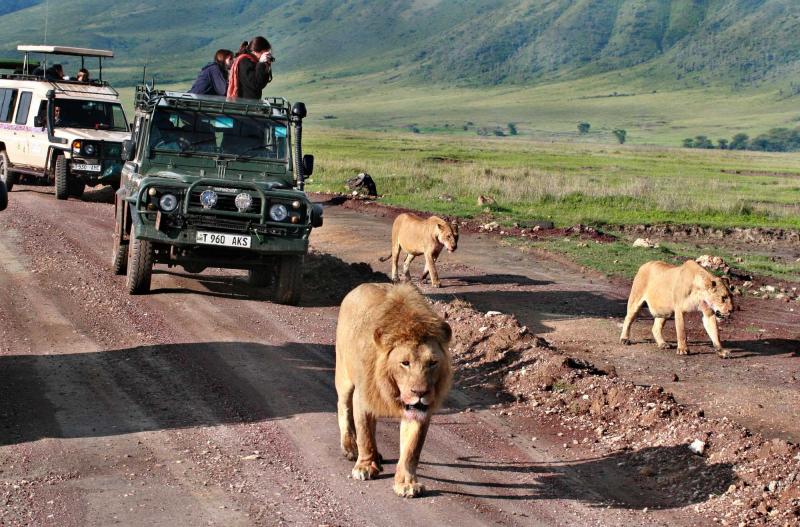Tanzania contains 20% of the species of Africa’s large mammal population, found across its reserves, conservation areas, marine parks, and 17 national parks, spread over an area of more than 42,000 square kilometers (16,000 sq mi) and forming approximately 38% of the country’s territory.
Wildlife resources of Tanzania are described as “without parallel in Africa” and “the prime game viewing country”. intact caldera in the world.
The fauna diversity of wild life in Tanzania in its national parks and game reserves is amazing. There are 310 mammal species (fourth largest in Africa); 960 species of birds (third place in Africa); and many amphibians and reptiles, which are stated to form the fourth largest population in Africa. The endangered fauna species are; the black rhino; Uluguru bushshrikes; hawksbill, green turtles, olive ridley turtle and leatherback turtles; red colobus monkeys; wild dogs; and Pemba flying foxes.
Northern Tanzania Safari or Southern Tanzania Safari?
Should you safari in the north or the south of Tanzania, and how long should you spend on safari? The northern safari parks are very different to those on the Southern and there are different advantages to each:
The parks in southern Tanzania are more remote, however easier to get to with daily flights from Zanzibar. The south favors the shorter safari and beach combination and the North favors a full safari experience.
Tanzania Northern Circuit

The ‘Northern Circuit’ safari offers some of the world’s most diverse safari experiences, consisting of National Parks, game reserves and conservation areas.
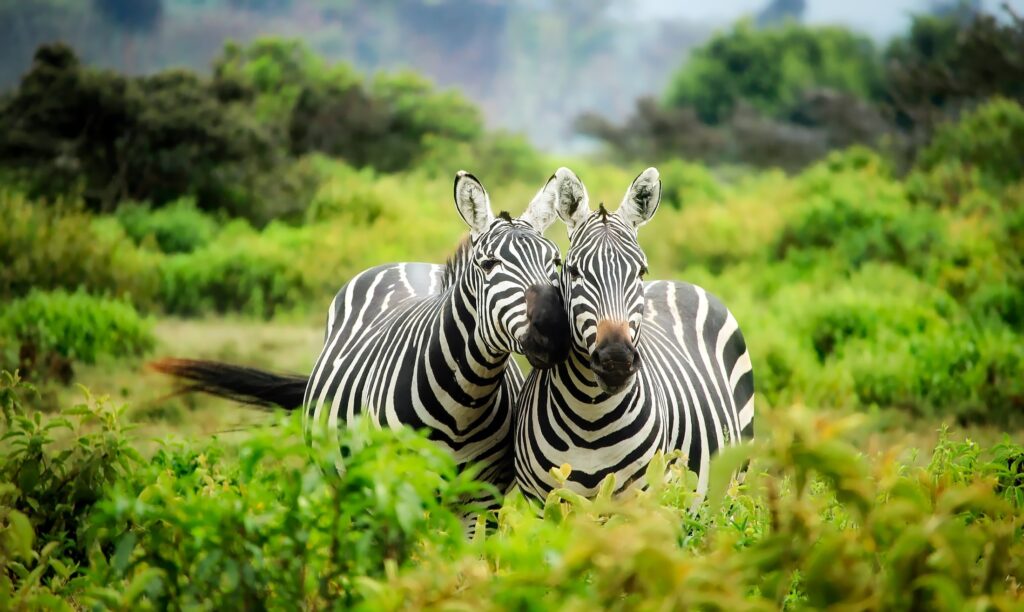
Arusha National Park
Size: 552 sq km (212 sq miles)
Location: Northern Tanzania, northeast of Arusha town.
Home to Mount Meru, and the Ngurdoto Crater, Arusha National Park is the perfect location for an active day trip. You may see colobus monkeys in its forest canopies as well as African buffalos, giraffes, zebras, antelopes and, if you’re very, very lucky, leopards, elephants and spotted hyenas.
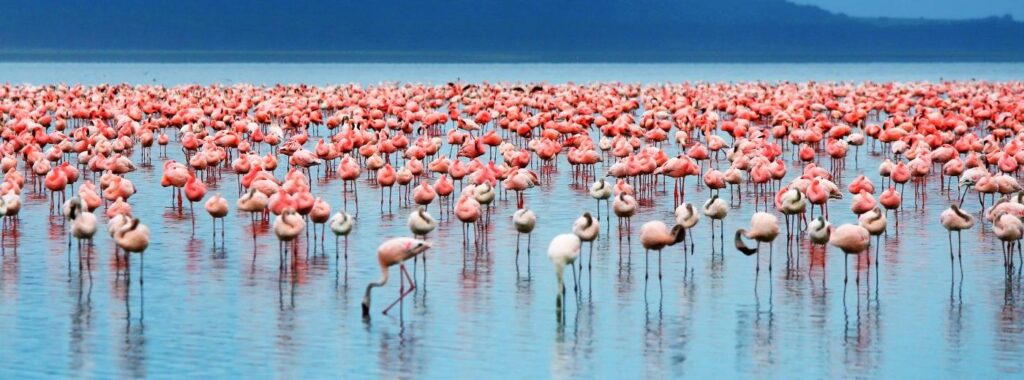
Lake Manyara National Park
One of the prettiest, most interesting and game-rich parks in Tanzania. You can expect to see troops of olive baboons and Sykes’ monkeys playing beside the road, and you are quite likely to find an elephant crossing your path. They frequently choose to use the park’s roads rather than having to struggle through the undergrowth. Remember to keep looking up to try and spot lions that often take to the trees, and there are also plenty of leopards, although you need luck to see them. This little gem also supports a dazzling array of birds, including the giant silvery-cheeked hornbill.
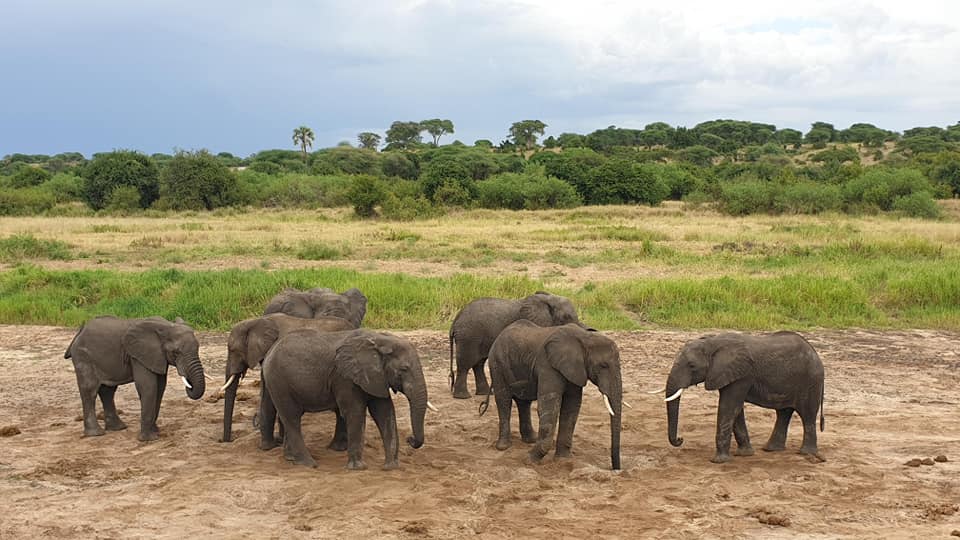
Tarangire National Park
Tarangire National Park has some of the highest population density of elephants as compared to anywhere in Tanzania, and its sparse vegetation, strewn with baobab and acacia trees, makes it a beautiful and distinctive location to visit.
Before the rains, droves of gazelles, wildebeests, zebras, and giraffes migrate to Tarangire National Park’s scrub plains where the last grazing land still remains. Tarangire offers an unparalleled game viewing, and during the dry season elephants abound. Families of the pachyderms play around the ancient trunks of baobab trees and strip acacia bark from the thorn trees for their afternoon meal.
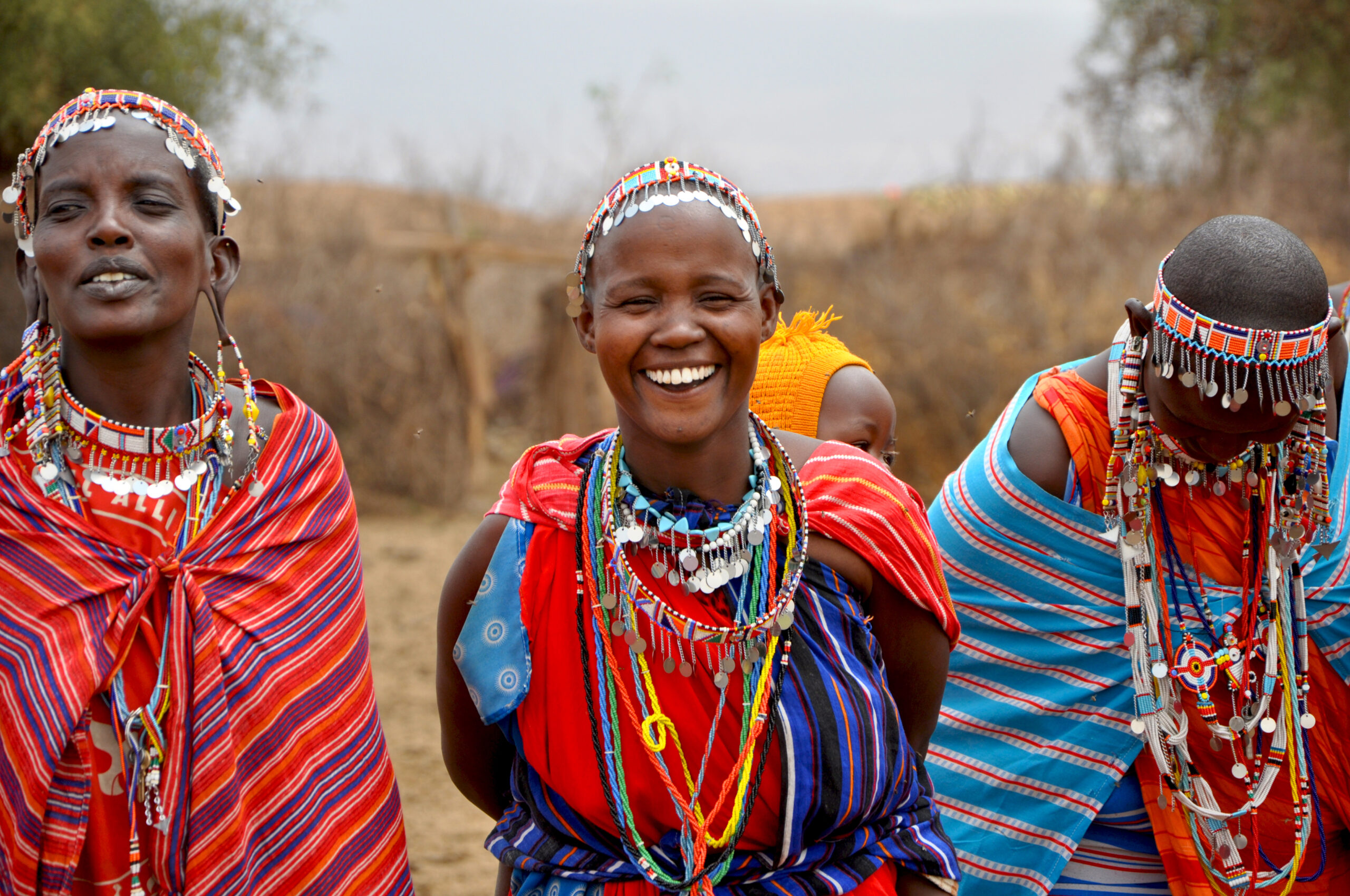
Ngorongoro Conservation Area
The Ngorongoro Conservation Area is a protected area that was declared as world heritage site by UNESCO. It is located 180 km (110 mi) west of Arusha.
The Ngorongoro Conservation Area is one of the most important prehistoric sites in the world. The fossils discovered there, are said to be the earliest known evidence of the human species.
This protected area is unique because of its efforts to preserve a way of life for both mankind and animals. Within the Ngorongoro Conservation Area, the Maasai people are free to graze their cattle alongside the likes of antelope, buffalo, wildebeest and zebra.
Interestingly, the name ‘Ngorongoro’ is onomatopoeic in origin. Masai cattle herders reportedly gave the crater its name inspired by the sound of their cow-bells ‘ngoro ngoro’. Due to the nature of the Ngorongoro Conservation Area, these cows and their Masai herdsman can still be seen making their descent to greener pastures or grazing among the herds of wildlife in the crater proper.
Maasai Tribe
The Maasai are an indigenous ethnic group in Africa of semi-nomadic people settled in Kenya and northern Tanzania. Due to their distinct traditions, customs and dress and their residence near the many national game parks of East Africa. The Maasai are among the foremost African ethnic groups and are known internationally because of their links to the national parks and reserves.
Cows come before everything else for the Maasai. They are the single most important aspect of their lives. The Maasai men take great pride in herding as their cows are their most prized possessions.
Because the Maasai are spread across such vast expanses of land, they have the opportunity to meet fellow tribespeople from far away. This presents the Maasai with a great opportunity to use their cattle to barter with. A good herd of cattle is a great sign of wealth.
To visit a real Massai village and experience their unique lifestyle contact Zanzibarinfo team
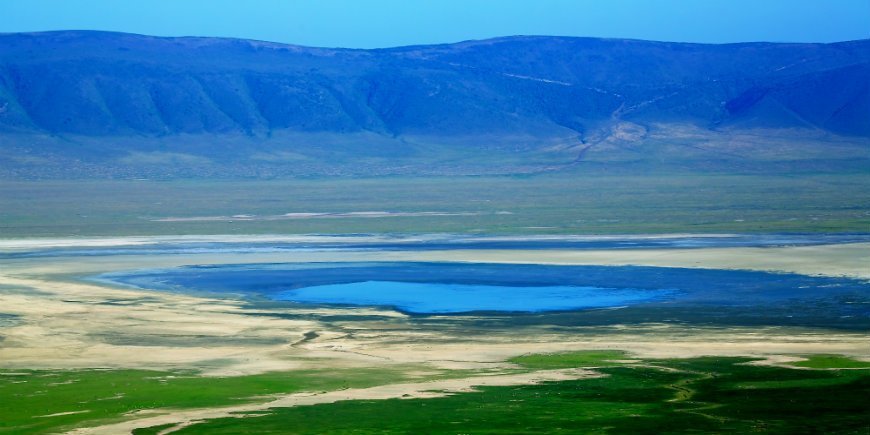
Ngorongoro Crater
Standing proudly in the Ngorongoro Conservation Area is the Ngorongoro Crater, the world’s largest inactive, intact and unfilled volcanic caldera. one of the Seven Wonders of Africa.
The Ngorongoro Crater is the remnant of the explosion of a huge volcano, which happened two to three million years ago. Being as high as 1,800 meters (5,900 feet) above sea level, this area can be hot in the day with cold highland nights.
Estimates say that about 3 million years ago, the intact volcano was almost as high as Kilimanjaro, between 4,500 and 5,800 metres. That is until the then active volcano exploded and collapsed in on itself forming the caldera or volcanic crater that is visible today.
There are around 30,000 animals in the crater, ranging from leopard, cheetah, elephant and hyena to warthog, buffalo and impala. It’s also one of the best places to see the endangered black rhino and black-maned male lions. The Ngorongoro Crater is also referred to as ‘the Garden of Eden’ due to its dazzling beauty and being a paradise for animals.
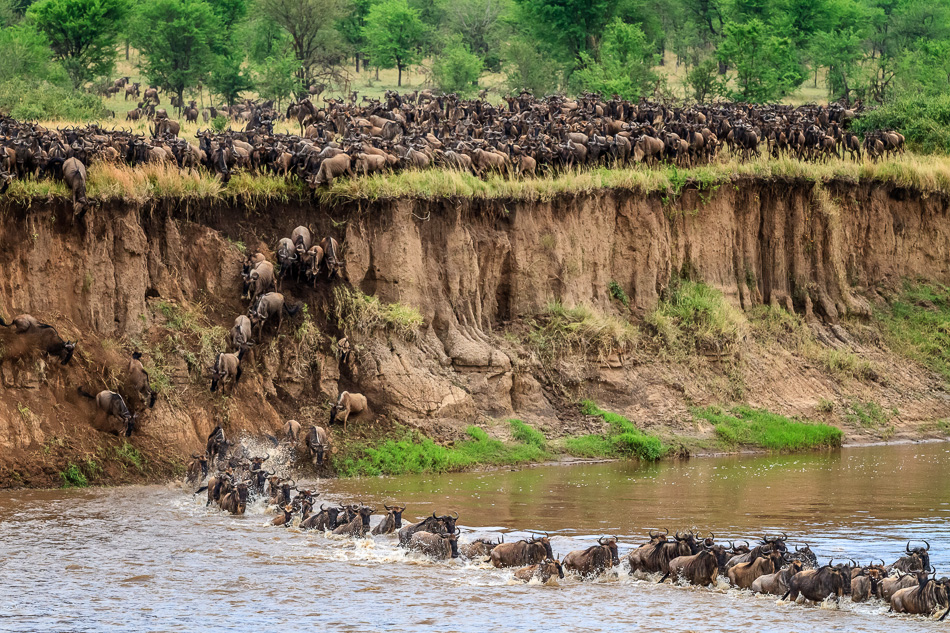
Serengeti National Park
The Serengeti National Park is one of the best safari destinations – not just in Tanzania, but in all of Africa – because an extraordinary number of animal species call the plains, rivers and woodland here home. It is Tanzania’s oldest park and a Unesco World Heritage Site.
Game drives within the park will always leave you in awe of the sheer quantity and diversity of wildlife found here, and it’s more than likely that you will experience that wildlife at its most natural and, occasionally, at its most brutal too. The Serengeti National Park is thought to have the densest and most abundant population of lions in Africa.
The Great Migration is one of the greatest natural spectacles to be seen anywhere in the world, and it takes place across the wild landscapes of the Serengeti National Park. Every year, millions of animals, primarily consisting of wildebeest and zebra, embark on hazardous journeys across the Serengeti. It’s an impressive sight, but if you want to see this migration in its full glory, then it’s important you travel to the Serengeti at the correct time of year.
Serengeti National Park is undoubtedly the best-known wildlife sanctuary in the world, unequaled for its natural beauty and scientific value, it has the greatest concentration of plains game in Africa.
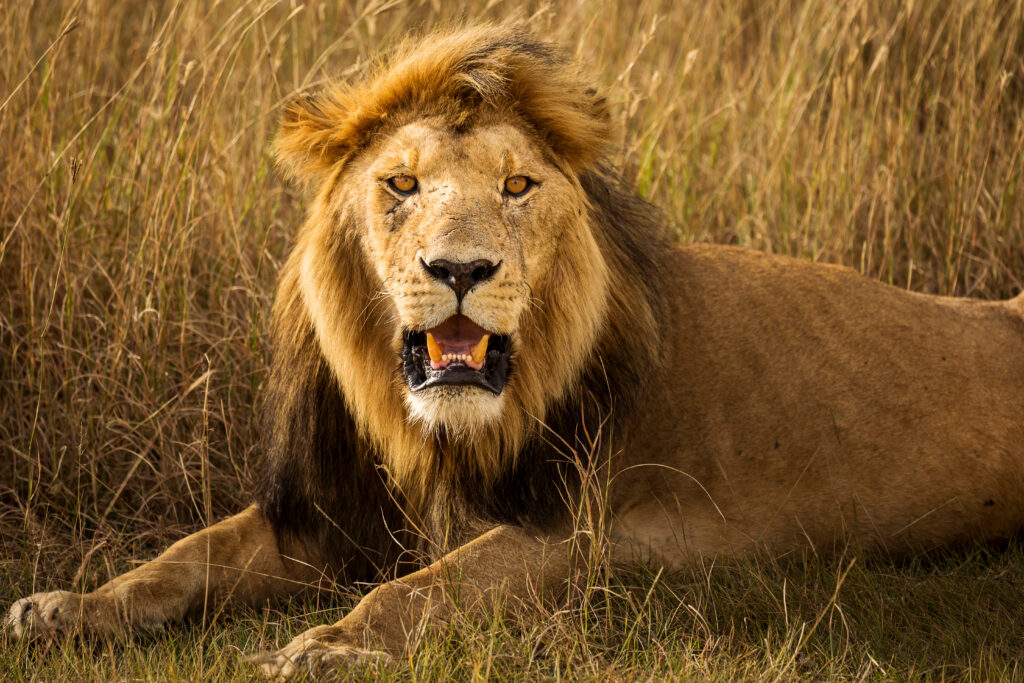
Tanzania Southern Circuit
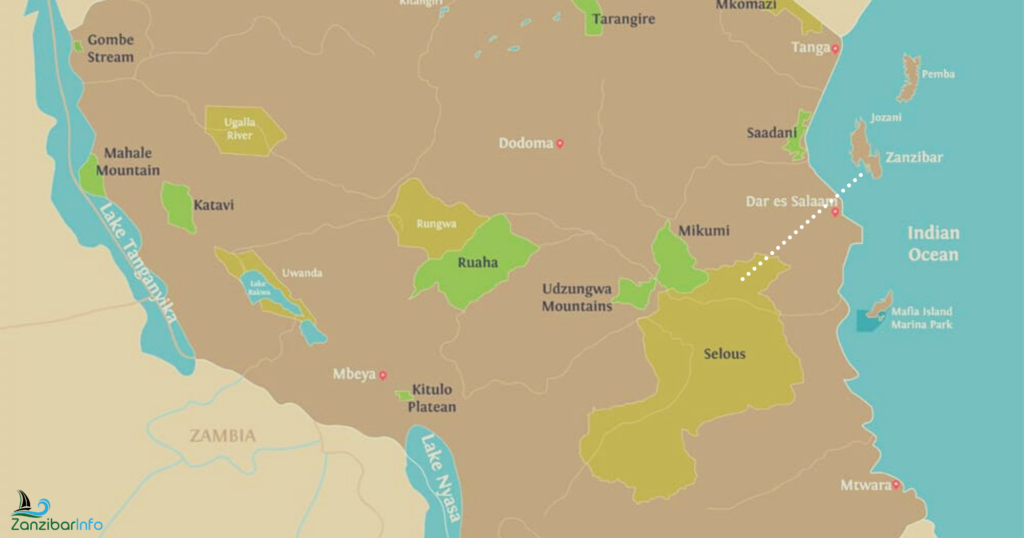
The southern parks present a wide range of experiences, from savannah to wetlands, walking safaris to river experiences
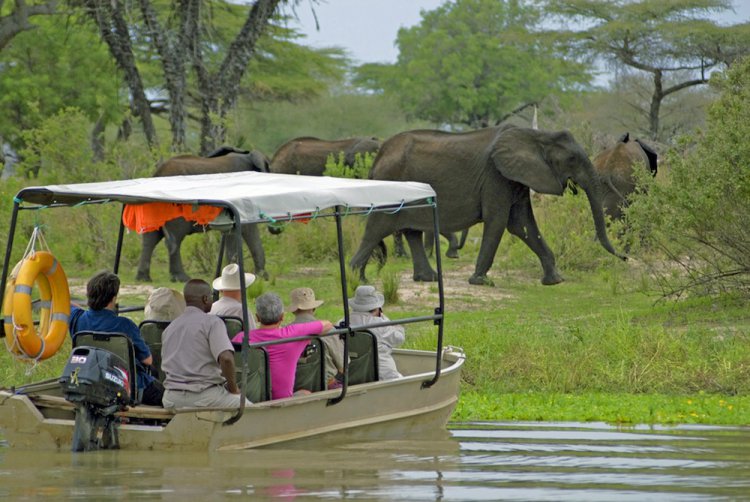
Selous Game Reserve
Standing as the largest game reserve in Africa, Selous is also the second largest conservation area in Africa sized at 50,000 square kilometers with lots of attractions . It is definitely noted as even four times bigger than the Serengeti. While in Tanzania, it is very special to take a safari to Selous as it is one of the most remote game reserves hence least visited parks in Africa. Because of it elaborate and unique beauty, the Selous has so many safari animals and thus has it in history that UNESCO declared it a world heritage in 1982. Selous game reserve offers a different game viewing perspective, you can enjoy a game drive, boat safari and safari by foot. Highly recommended for short safaris combined with leisure in Zanzibar.
For more information about short safaris contact Zanzibarinfo team
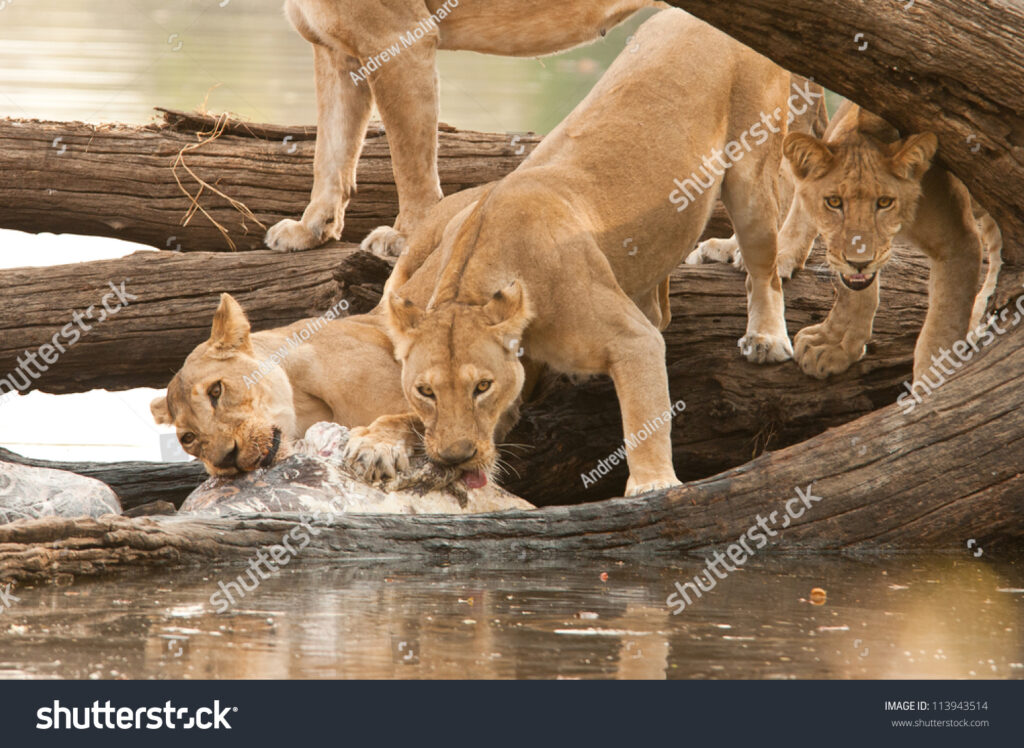
Ruaha National Park
Located at the heart of Tanzania, Ruaha is the ‘other park’ on the Southern circuit. Ruaha’s relative inaccessibility means it gets far fewer tourists than the Selous and less than any comparable park in the Northern circuit. The rewards of travelling this far are a wild landscape with baobab studded hills and rocky escarpments, with superb wildlife; Ruaha safaris have reliably exciting predator concentrations, it is home to 10% of the world’s lion population, contains one of four cheetah populations in East Africa and has the third largest wild dog population in the world. This is accompanied by huge elephant and buffalo herds and a cross-over of game from southern and Eastern Africa
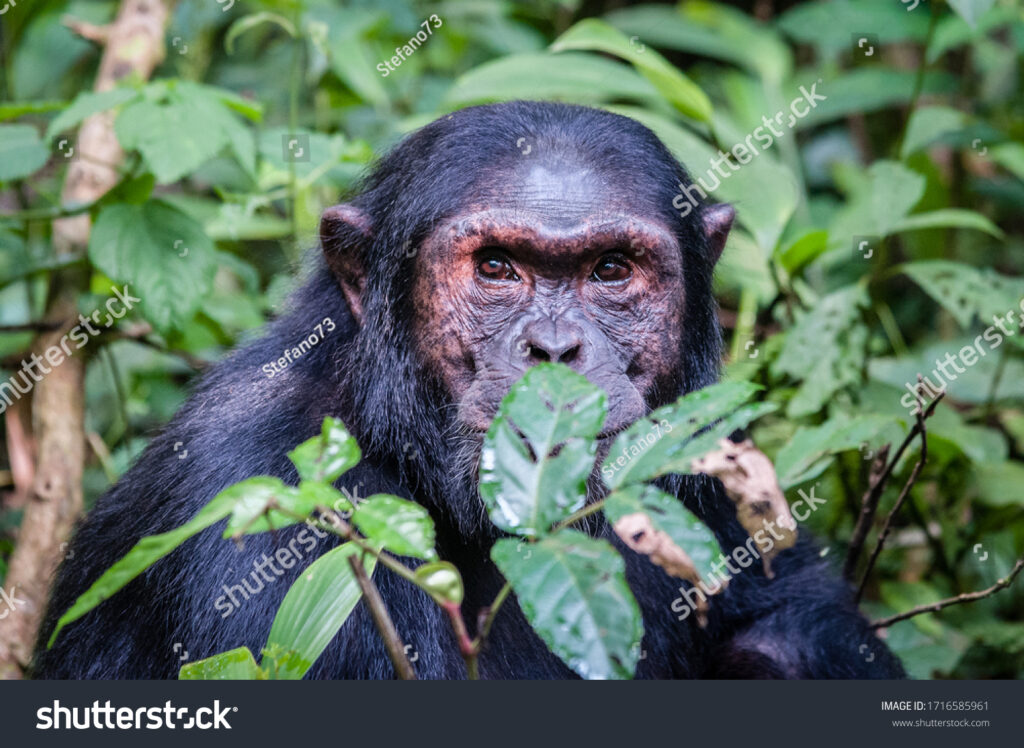
Chimpanzee in Mahale Mountains
Located in the far west of the country on the shores of Lake Tanganyika and home to the best chimpanzee viewing in Africa, Mahale would stake its claim as one of the most exceptional and unique safari destinations on the continent. The main attraction of Mahale is chimpanzee trekking, but Mahale offers so much more as well. It is a truly beautiful and incredibly remote location. Just being here and taking a stroll on the shoreline of Tanganyika is spectacular. You can go kayaking, snorkelling or fish out on the lake, spend hours walking through the forest spotting other smaller primates and plenty of birds, or climb through narrow tracks to discover hidden waterfalls.
Kilimanjaro Mountain
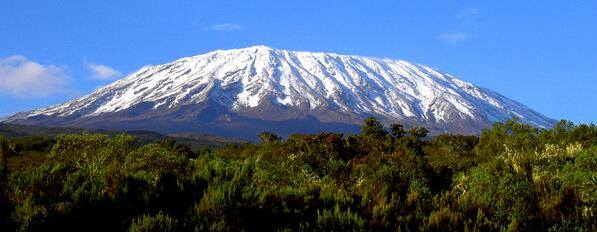
Mount Kilimanjaro is the tallest mountain in Africa, making it one of the seven summits. Kilimanjaro is very popular with both experienced hikers and first time adventurers because it is considered to be the easiest of the seven summits. Scaling the mountain requires no technical skills or equipment, such as rope, harness, crampons or ice axe. Therefore, it is a hiking or “walk up” peak, not a mountaineering or climbing peak.
